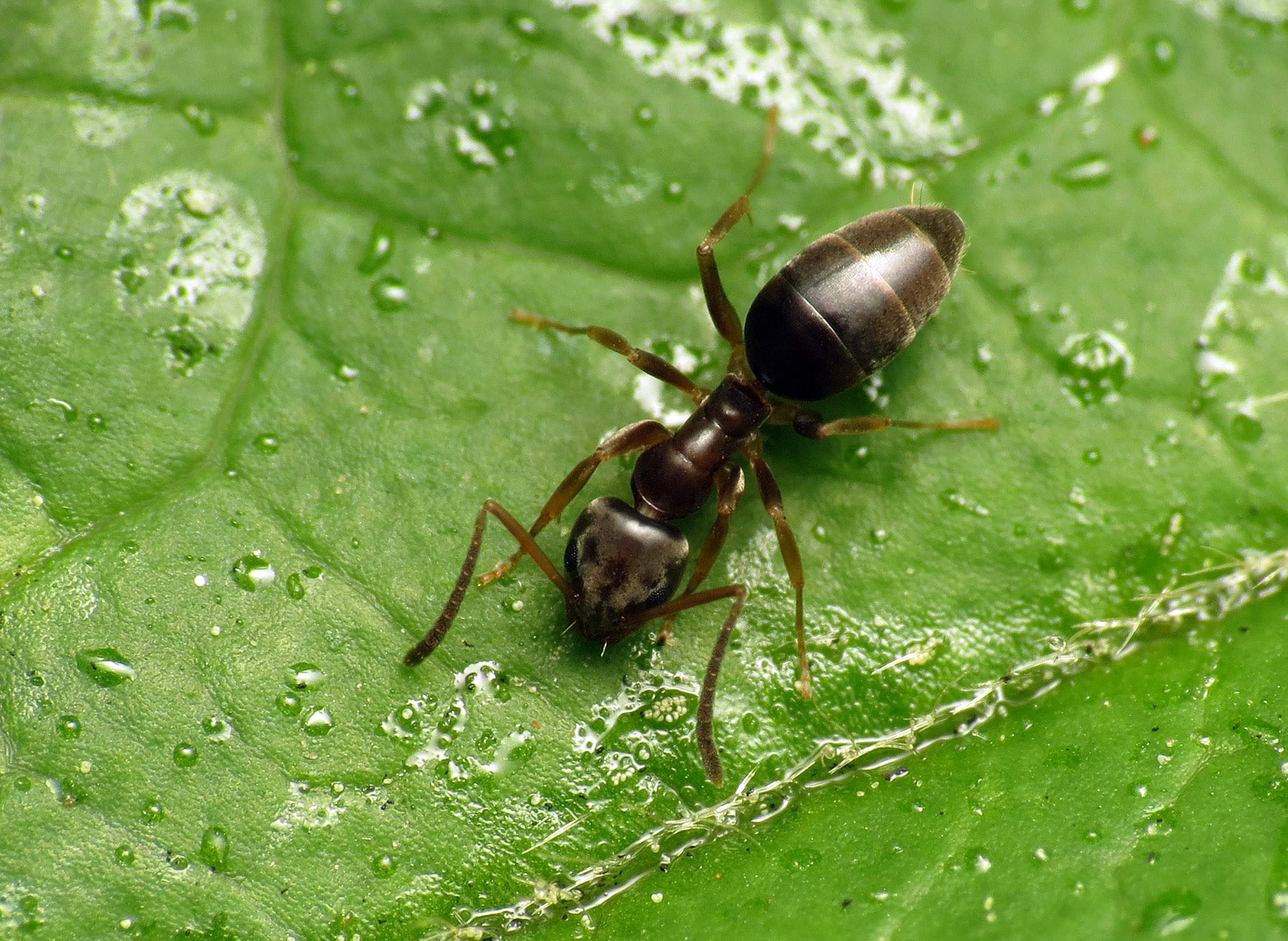
The Sweet Tooth And Unique Scent Of Odorous House Ants

When it comes to ant pests around Wisconsin, the most common species are usually carpenter ants, pavement ants and odorous house ants (Tapinoma sessile). This latter species was the most commonly reported type of ant encountered by the University of Wisconsin Insect Diagnostic Lab in 2018, possibly due to rainy conditions, which can force it indoors in search of food.
The tiny brownish odorous house ant measures in at only an eighth of an inch long, but a few features allow for quick identification.
Ants are generally classified into two main groups depending on the numbers of bumps — or "nodes" — in their constricted waist. Odorous house ants are considered "one node" ants, although their single node is flattened and is hidden from view by their gaster, which is sometimes mistakenly referred to as the "abdomen" of ants.
This anatomy is strikingly different from other ants, such as carpenter ants or field ants, where the single upright node can even be visible to the naked eye. This flattened node of odorous house ants is a key identifying feature, but does require magnification to interpret the trait.
Interestingly, the easiest way to identify these ants isn't by sight, but by smell.
Identifying insects by smell may sound odd, but can be a quick and dirty way to confirm the identity of this species and a few others. When squished, odorous house ants have an odor reminiscent of coconut, although some say rotting coconut or even blue cheese. This scent fades with older, dried-out specimens, but it is usually quite noticeable in fresh ants.
Country ant, city ant
Odorous house ant colonies occur both indoors and outdoors in the midwestern United States, but the location of these ants in the landscape can have a drastic influence on colony structure and behavior. In natural areas such as forests, odorous house ant colonies tend to be small (often less than 100 workers) and the ants are considered generally "well behaved." In urban areas, though, these ants can produce much larger populations with multiple queens, tens of thousands of workers and many different nesting sites. They can behave like an invasive species in such situations.
When it comes to nesting habits, odorous house ants don't produce mounds like other common ants. Instead, these ants are fond of pre-existing cavities — small hollow voids beneath rocks or man-made objects, among log piles, fallen leaves, mulch beds or similar spots. They'll even take advantage of the cozy space inside of a "Hide-a-Key" fake rock!
When indoors, odorous house ants tend to nest in hollow cavities such as wall voids, especially if a moisture source is nearby. These ants can also easily wander indoors when foraging, making them a common nuisance invader.
Got dessert?
In addition to their essence-of-coconut scent, odorous house ants are known for having a notorious sweet tooth.
Ant species vary quite a bit in their food preferences, with certain ants seeming to favor the "keto diet" with a strong preference for proteins or fats. In contrast, odorous house ants have a particular fondness for carbohydrate-rich materials, such as honeydew from aphids, nectar from plants or sugary human foods.
As a result, these ants routinely invite themselves to picnics and into kitchens. However, these sugar-loving ways can also be their Kryptonite, and odorous house ants usually respond well to sugar-based baits when they do find their way indoors.




